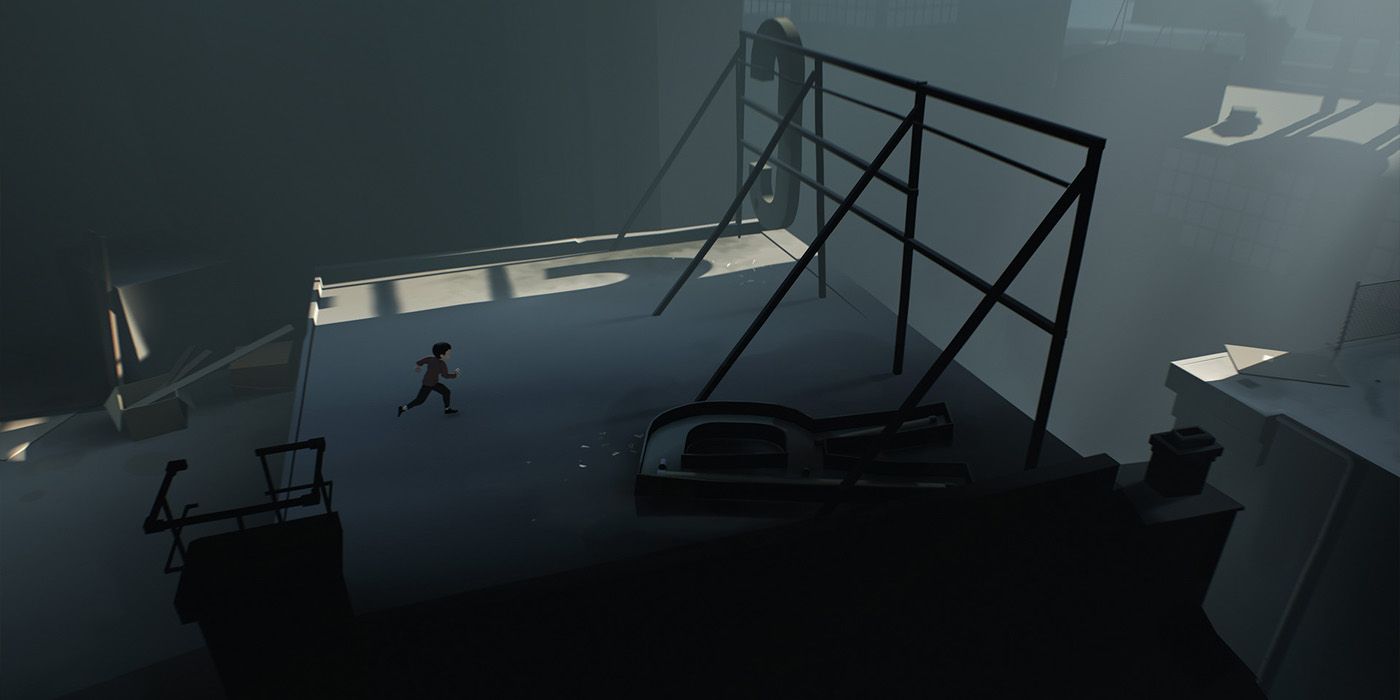Quick Links
Inside‘s ending is one of the most confounding conclusions to a game in recent memory, which can make the story feel unsatisfying or even incomplete – but with a little bit of additional insight, perplexed onlookers can find meaning in the final sequence. Getting to the end of Playdead’s puzzle platformer is challenging in and of itself; after all, it’ll require problem-solving with little to no help, aside from the occasional guidance of a spotlight. Despite all the trouble they’ve gone through, the end result is nothing but oddity and vagueness. Fortunately, a deeper meaning can be found upon closer analysis of Inside‘s ending and story.
[Warning: The following article contains spoilers for Inside.]
Toward the end of Inside, the unnamed protagonist will find themselves absorbed into a creature known as the Huddle, which is the disturbing result of scientific experimentation and seemingly composed of human limbs. Now playing as the collective Huddle, they’ll be tasked with escaping the containment facility. Only adding to the confusion is that once the Huddle manages to break free, Inside simply ends. The abrupt conclusion, combined with the loss of individual autonomy and general grotesqueness, has left many (understandably) wondering what the ending of Inside actually means.
Inside Game Explained: What Really Happens During Inside’s Ending
While much of the game is up for interpretation, one of the prevailing theories for the Inside game’s ending is that the protagonist was actually being controlled by the Huddle, which only wanted to break free to escape further experimentation. Considering that the boy broke into a fortified facility and knew exactly where to go in order to solve Inside‘s puzzles and free the Huddle – eventually becoming a part of it himself – it makes sense that the creature somehow used him to its advantage. After all, the protagonist is the youngest of all the characters in Inside and may be the most susceptible to mind control.
Inside Game Alternate Ending Explained
Looking at the bigger picture, the Huddle mind-control theory makes a lot of sense, but there’s another prominent theory as to the true meaning of Inside‘s ending, specifically in relation to the game’s secret ending. Like many of the best secret endings, certain requirements must be met in order to receive this special outcome. When getting Inside’s secret ending, 14 hidden light orbs found in hidden rooms across the map must be located and deactivated, including a lengthy secret sequence using a lever. Transported to another bunker, the mind control helmet must be powered down by pulling its plug.
After this, the protagonist loses his free will, falling into the same keeled-over position exhibited by other mindless drones throughout the game. The dark scene suggests that the boy was indeed being controlled by an external force the entire time, but just not by the Huddle. This may be some kind of commentary on the player, who has been controlling the boy throughout Inside‘s narrative. However, it could also refer to one of the scientists who was trying to perfect the Huddle, thus giving the creature an illusion of an escape before nefariously crushing its hopes and dreams.
From being mind-controlled by the blob-like Huddle to being mind-controlled by some unknown, antagonistic third party, both plausible explanations for the Inside game’s ending are just as bleak as they are ambiguous. However, at the end of the day, there is no right or wrong way to make sense of the events that transpire during the game; their sheer obscurity invites people to draw their own conclusions however they see fit. Unless Playdead itself ever reveals what happens, there’s no sure way to know what Inside‘s ending really means – but perhaps that’s for the best.
Source: Brett Makedonski/YouTube


.jpg)